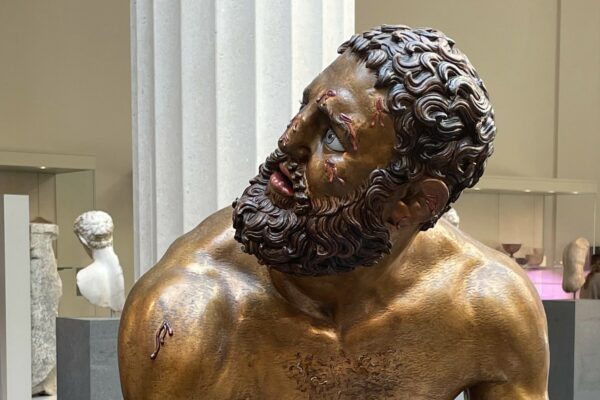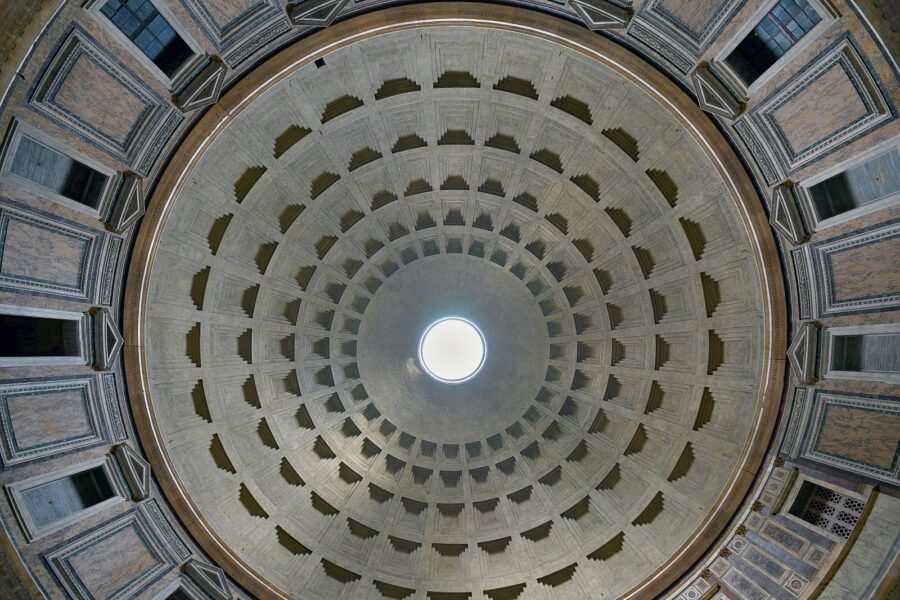
“I can’t believe Hadrian made us build all this just so he could practice his architectural photography.”
Episode 53: In which Pliny and Vitruvius learn that modern mortals have been throwing shade at their concrete recipes this whole time.
This episode of Real Housewives of Hades (a Mt. Olympus spin-off) brought to you by the latest archaeological news on CNN.com – and by CLAS-C 414 Art and Archaeology of the Roman World.
[SETTING: Underworld Scientific Academy]
PLINY THE ELDER, ANCIENT SCIENTIFIC WRITER AND TERRIBLE VULCANOLOGIST: Good news, everyone! Vitruvius made the mortal news again!
VITRUVIUS, ANCIENT ENGINEER AND ARCHITECTURE AUTHORITY: Alright! What was it for this time? My careful discussion of geometric proportions in temple columns?
PLINY THE ELDER: Well, no. It was for your concrete recipes. But still neat!
VITRUVIUS: Huh. Wouldn’t have thought that would be a popular retread, but here we are.
PLINY THE ELDER: It turns out the mortals have been wondering for years how our Roman concrete survived so long. It’s pretty much naturally indestructible. It even seems to have self-healing properties, where small cracks just sort of vanish.
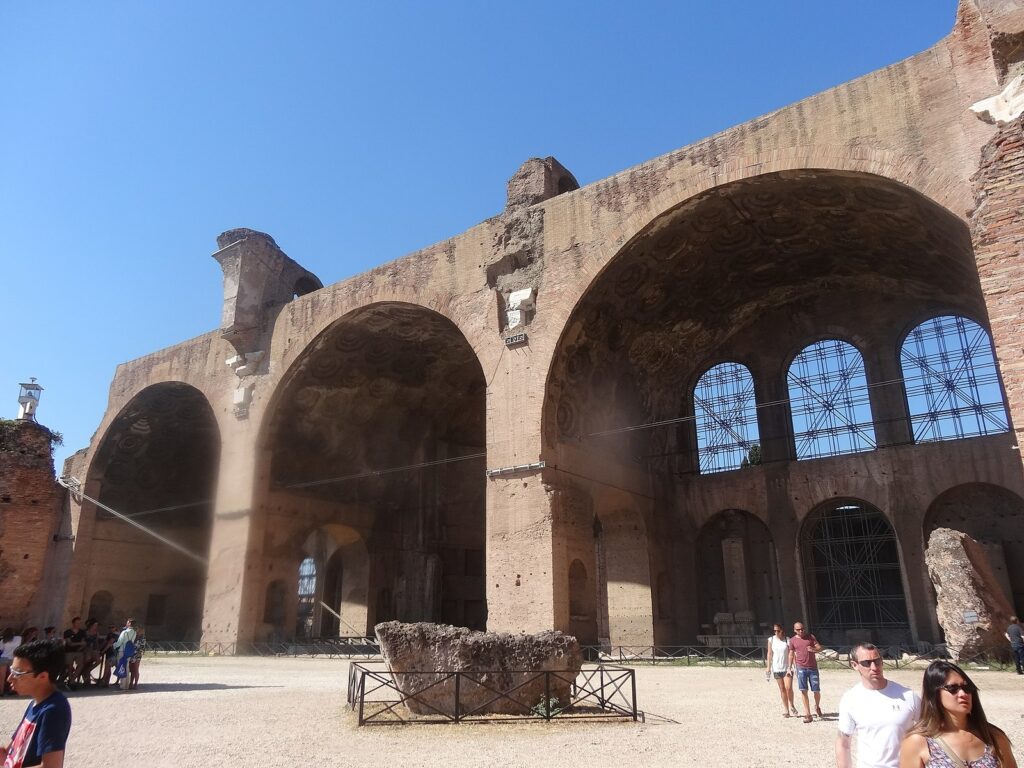
Why is this still here???
VITRUVIUS: If they were wondering this for so long, why didn’t they just come down here and ask us? Or send Hercules or Odysseus as a messenger?
PLINY THE ELDER: I don’t think they really do that any more. They communicate by something called “e-mail.”
VITRUVIUS: Seems in-E-ffecient (laughs hysterically). Man, Augustus is going to love that one. I crack myself up!
PLINY THE ELDER: Right. Anyway, apparently for centuries the mortals thought that the lime clasts in our concrete were a byproduct of sloppy construction. But it turns out those clasts are the glue that holds the concrete together!
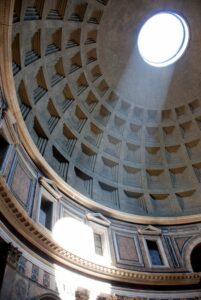
Idiots.
VITRUVIUS: They thought that a type of construction material famous for its unbelievable durability was filled with byproducts of sloppy construction?
PLINY THE ELDER: (shrugs) Modern mortals have this habit of thinking ancient people were idiots. Like how they assume we couldn’t figure out how to build pyramids, which are basically piles of rocks. (brightening) But in this case the mortals did some experiments, and it turns out that, when the lime clasts come in contact with a lot of water—like in a crack—the lime dissolves and fills in the crack. Then when it dries it hardens again and seals up the crack!
VITRUVIUS: Yes, I know. That’s why we worked with quicklime. It sets faster, which allows the little lime-glue-packets to form when the lime crystallizes quickly. Why did the mortals think we were taking the risk of using such a super dangerous material? Did they think we just had a death wish and decided to go out via concrete mixing?
PLINY THE ELDER: I’m not sure, although I do think they assumed we were working with slaked lime, since it’s safer.
VITRUVIUS: I mean, you should never assume Romans will choose the safer option. Our characteristic entertainment form involved wrestling lions. In venues made of concrete! Like the Colosseum! Still there, by the way.
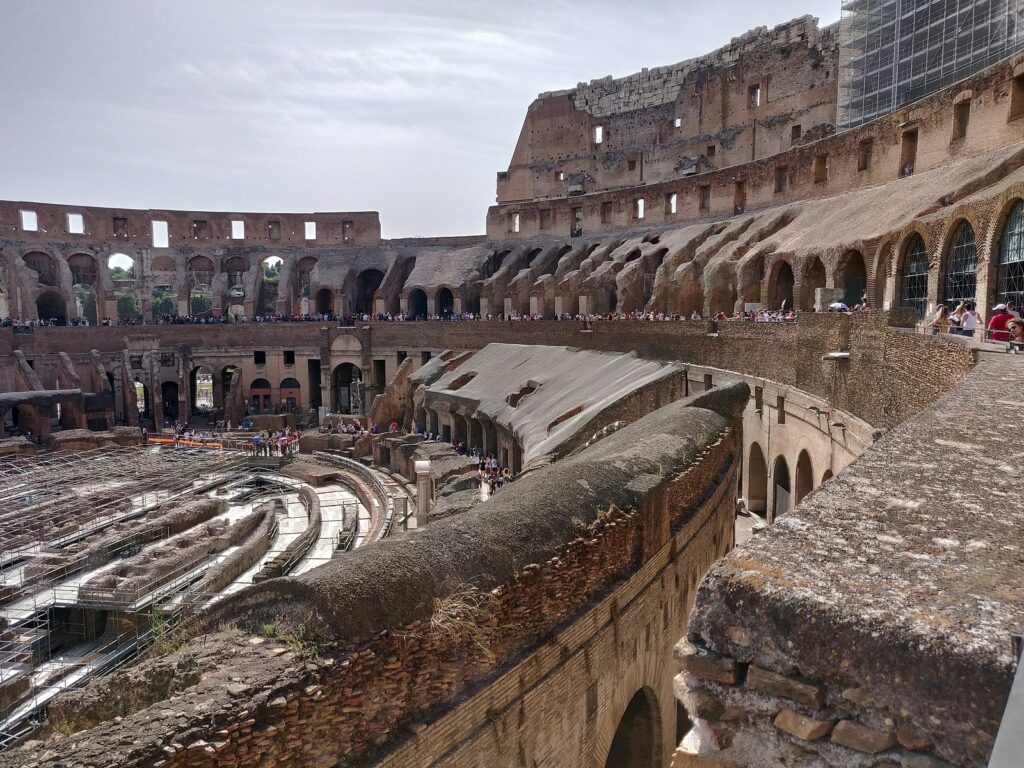
After having been constructed using tons and tons of volatile quicklime, the Colosseum adopted its famous slogan “Safety First!”
PLINY THE ELDER: The mortals think this could be an important discovery to improve modern concrete technology. Apparently their concrete is always breaking apart and emitting something.
VITRUVIUS: Emitting something? Like what, spirits?
PLINY THE ELDER: I can only assume that’s what “greenhouse gases” means. I think I overheard Thetis complaining about them the other day. Based on what she was ranting about, they must be spirits or vapors that make things super hot.
VITRUVIUS: Oh, like how you can use a hypocaust system to channel the evil heat spirits in boiling water to cook oysters! Or warm the floor of a Roman bath! But mostly the oyster thing.
PLINY THE ELDER: You might want to double-check that. I’m not sure that’s how that works.
VITRUVIUS: (muttering) Like I’m going to follow the advice of a guy who died because he couldn’t understand how heat, air, and water interact…
Share on Instagram, or really wherever you want.
To learn more about how Romans invented concrete and changed the architectural world forever, look for CLAS-C 414 Art and Archaeology of the Roman World, coming up Spring 2026 with no pre-reqs. Or to learn more about Roman infrastructure (which was just fine, thank you very much), enroll in CLAS-C 102 Ancient Roman Culture, coming up Spring 2025, and earn GEC credits while you’re at it! If you’re curious about how Pliny the Elder famously sailed to his death in Pompeii, look for our 1-credit “appetizer” course CLAS-B 312 Plague, Disasters, and Death in the Ancient World, coming up next semester in Fall 2024, also with no pre-reqs. Can’t get enough of Ancient Greece and Rome? Earn a Classics Minor in just 15 credits!


